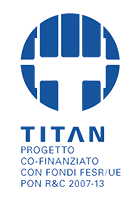UMAP welcomes you to Rome, the world capital of multidisciplinary studies, influential worldwide in subjects such as architecture, art, culture, politics, literature, law, philosophy and religion. Due to its centrality on many levels and powerful city-status, Rome has been nicknamed Caput Mundi (Latin for Capital of the World) and The Eternal City. The city bearing so many architectural and archaeological marvels tops the UNESCO World Heritage Sites.
Since the 1957 Treaty of Rome establishing the European Economic Community, the metropolis has served as a centre for international co-operative activities, with worldwide organizations such as the World Food Program (WFP), Food and Agriculture Organization (FAO), International Fund for Agricultural Development (IFAD) and NATO Defense College being headquartered in the city.
Rome is the third most visited city in the European Union. For these reasons it is not difficult to find plenty of information, documentaries and guides around.
First time
Whether your emphasis is ancient history, Renaissance art or modern shopping, two or three days in Rome will give you plenty of choices.
Colosseum (aka Flavian Ampitheater) is one of the great works of Roman engineering placed in the historic centre of the ancient city. In the 1st century AD, when it was built, it was the site of gladiator fights, mock sea battles, and other enactments. Visit Colosseum in the late afternoon when the crowds are ever-diminishing. An hour or two inside should be plenty. Another line-busting tip is to buy your ticket at the Roman Forum. Few tourists realize that the Colosseum ticket is dual entry with the Forum and can be bought at the lesser site with smaller crowds.
Nearby: Roman Forum, Arch of Septimus Severus, Temple of Saturn, Arch of Titus and the House of the Vestals, Piazza Venezia, Piazza del Campidoglio.
St. Peter’s Square (Piazza San Pietro) his grand and magnificent square has retained its classical beauty and serves as the place from which the masses receive the Pope’s weekly blessing. Nearby: St. Peter Basilica and Sistine Chapel, Vatican Museums, Castel Sant’Angelo and Passetto di Borgo.
City Centre squares and fountains: Along Via del Corso, detour down the well-trod side streets to the Pantheon at Piazza de la Rotonda, Sant’Ignazio church of illusions, Piazza Navona and its marvellous fountains, San Luigi dei Francesi church and its 3 paintings of Caravaggio, and then double back to reach the world famous Trevi Fountain. After you’ve tossed a coin in the fountain and had an ice cream, the streets beyond the Fountain contain Rome’s most chic shopping spots leading all the way up to the Spanish Steps.
There are more than 900 churches in Rome. If you do not have enough time, try to visit the four major basilica: Archbasilica of St. John Lateran, St. Peter’s Basilica, Saint Paul Outside the Walls, and St. Mary Major. These four major basilicas are distinguished by their having a holy door and for being prescribed as destinations for visits as one of the conditions for gaining the Roman Jubilee. Only the Pope and his delegatees may celebrate mass at the high altar. In a more prosaic level, engage yourself in the quest to find the places featured in the book and movie Angels and Demons.
Not-to-be-missed Galleries and Museums: Villa Borghese, Musei Capitolini, Galleria Doria Pamphilj, Etruscan national museum of Villa Giulia.
If your time is short, hop on the 110open tourist bus (or a similar service) which route goes through the centre of Rome and it takes in all the major historic and archaeological sites.
More to see
EUR District originally chosen in 1930s as the site for the 1942 world’s fair which Benito Mussolini planned to open to celebrate twenty years of Fascism. The design was inspired, according to the fascist ideology, to Roman Imperial town planning, with modern elements which came from Italian rationalism, the result being a sort of simplified neoclassicism and metaphysical art. Nearby: Palazzo della Civiltà Italiana, Palazzo dei Ricevimenti e dei Congressi, shopping at Viale Europa.
Undoubtedly one of Rome’s most romantic spots, the Gianicolo (Janiculum) Hill rises up behind Trastevere and reaches as far as the Basilica of St. Peter’s. The panorama is here breathtaking: the view stretches over roofs, ancient ruins, monuments and baroque domes as far as the hills embracing the city. While for art lovers the Tempietto del Bramante is an absolute must, given it is perhaps the best example of Renaissance architecture in Rome, naturalists should certainly visit the Orto Botanico (Botanical Gardens) with its over 8,000 different kinds of plants. Every day, on top of the hill, a special canon fires blanks at noon on the hour.
Roma Contemporanea: Auditorium by Renzo Piano, MAXXI Museum by Zaha Hadid, Nuvola by Massimiliano Fuksas, Dives Misericordia church by Richard Meier.
Ostia Antica: less than 30km from Rome reachable by train was the port city of the capital of Europe’s greatest empire. Scattered among the umbrella pines that now dot the site are a splendid amphitheatre which is still used for concerts, and the remains of schools, baths, temples and latrines, as well as Europe’s oldest synagogue. Ostia Antica also boasts some unusually well-preserved mosaics and frescoes. A few railway stops bring you to the beaches of Ostia where you can enjoy a sunbath at one of the Lidos which turn into disco clubs at night hours.
Villa d’Este is a living Eden, filled with fountains, statues and breathtaking Baroque gardens. Villa Adriana is an exceptional complex of classical buildings created in the 2nd century A.D. by the Roman emperor Hadrian. It combines the best elements of the architectural heritage of Egypt, Greece and Rome in the form of an ‘ideal city’. Both of them are best reached by an organized tour. North of the city, Lago Bracciano is a relaxing lake area with plenty of nature and three interesting Medieval villages along the shore, complete with castles, churches and villas – a great getaway from the hustle and bustle of Rome. The beaches in and around Civitavecchia on the Mediterranean town is another option.
nightlife
Trastevere and Campo de’ Fiori: Starts from the Basilica of Santa Cecilia in Trastevere (built between the early 800 and 1100) that preserves the tomb of St. Cecilia. After traveling the characteristic streets, cross Viale Trastevere at via della Lungaretta, follow it all square in the direction of picturesque square of Santa Maria, a meeting place for tourists and residents alike, lies one of the first churches of Christendom. What we can see today, however, is a reconstruction of the Middle Ages and later added yet easy to distinguish. Granite pillars that divide the aisles are derived from the Baths of Caracalla. To admire: the mosaics and the wooden ceiling Then reach Piazza Trilussa and the Acqua Paola fountain, meeting point of young people. Crossing the Tiber at Ponte Sisto, strolling through the picturesque Via dei Pettinari you get to Campo de’ Fiori, another of the beating hearts of Roman nightlife.
Testaccio is a Rome Neighborhod anchored by the old stockyards, now a vaunted contemporary arts exhibition space, and a hill (Monte Testaccio) made of Roman amphora fragments discarded from ships on the nearby Tiber. For what is considered by many to be the best and cheap pizza in Rome, head over to 75-year-old Remo pizzeria (Piazza Santa Maria Liberatrice 44), or choose one of the many traditional restaurants in Testaccio. As you head back toward central Rome on foot following the pleasant Lungotevere, you can choose to enter what is known as the Ghetto near the Portico d’Ottavia, just across from the Isola Tibertina. Roman Jews were locked into this corner of Rome at night for more than 300 years starting in 1555, but today it is a thriving neighborhood full of bakeries, restaurants and shops. Here foodies will find a whole different Roman cuisine. Give it a try.
Rome is the party that never ends. Discos compete for extravagent themes and décor, and if they don’t always keep up with the latest trends in London or L.A., they still provide a great evening for the young and foot loose. Thursdays through Sundays are club nights. Clubs usually get crowded after 1:00am. Via Monte Testaccio and Via G. Libetta offer most of the popular choices. San Lorenzo district is where the largest university in Rome is located so it is a young, laid back area where students hang out in the many pubs and alternative clubs. The atmosphere is informal and lively.
WHERE TO EAT
Italy is a country defined by food, and Rome is no exception. You have plenty of choices to have a fantastic meal if you try to avoid the direct surroundings of historical spots and Vatican area, restaurants with only-English menus offering “spaghetti bolognese”, “fettucini alfredo” and variations of such nonsense, or where door guys try to push you inside. From the Michelin starred La Pergola Hotel Cavalieri Hilton (Via Cadlolo 101), Il Pagliaccio (Via dei Banchi Vecchi 129) and Oliver Glowig (Via Ulisse Aldrovandi 15) to the more traditional and affordable spots that collect several reviews on popular websites, such as Tripadvisor or Yelp.
Rome Digest is another recently opened portal for dining, drinking and food shopping in the city.
CURRENT EVENTS
060608.it (twitter @060608it) both a telephone and internet information service of the city of Rome specifically designed for tourism and culture in the city of Rome, managed by the City Council. Whether you’re a local or a visitor give us a call to get the latest on what’s on, such as events and shows.
Roma Capital Tourism: provides a wide range of information, itineraries, from current events, where to getting married and where to sleep (hopefully with the same person).
ilmiolazio itineraries, local food and wines and more in Lazio, the Rome’s region.
Twitter @buzzinrome EN-language Rome travel blog written by locals for the international community.
Tourist-cultural cards
Roma Pass provides the opportunity to benefit from various discounts and services that make it easier and cheaper to enjoy the splendours of Rome, museums and archaeological sites. Roma & Più Pass includes all above plus a number of museums and archaeological sites located in part of the province of Rome, and public transportation throughout part of the Province of Rome.
OMNIA Vatican & Rome opens the doors to Basilicas, Museums, public transportation, Roma Cristiana Open Bus and Itineraries.
OTher info
CURRENCY EXCHANGE AND ATM
The official currency is the Euro. For currency exchange needs there are Forexchange offices in airports, downtown area and Termini station (on the ground floor opposite to platform 12-13 and in the Forum Termini Shopping Center near the escalators to via Marsala).
Credit cards (especially Visa and Mastercard) are generally accepted at all commercial concerns. All the cash points (ATMs) are operational 24 hours a day and instructions are available in several languages. Bank opening times vary from branch to branch. Generally speaking they are open from 8.30am to 1.30pm, Monday to Friday. You may also find some banks open in the afternoon from 2.00pm to 3.30pm
what to avoid
- Illegal, unmarked taxis
- Street vendors
- Unofficial tour guides
- Taking pictures of costumed gladiators at Colosseum
- Random (low quality) restaurants
- Buying expensive water from street carts















